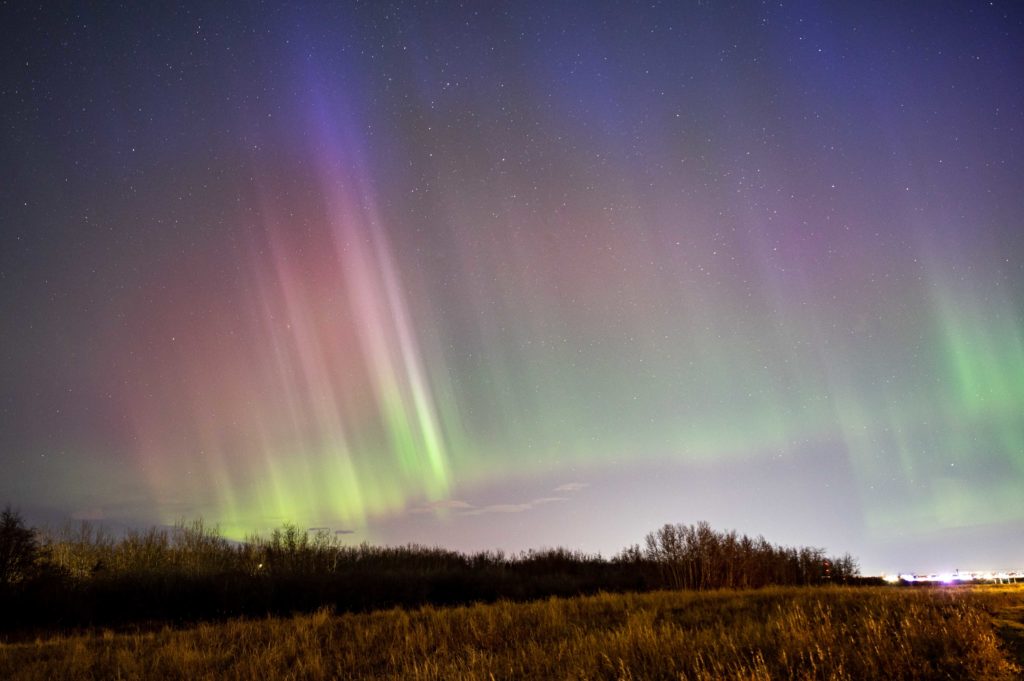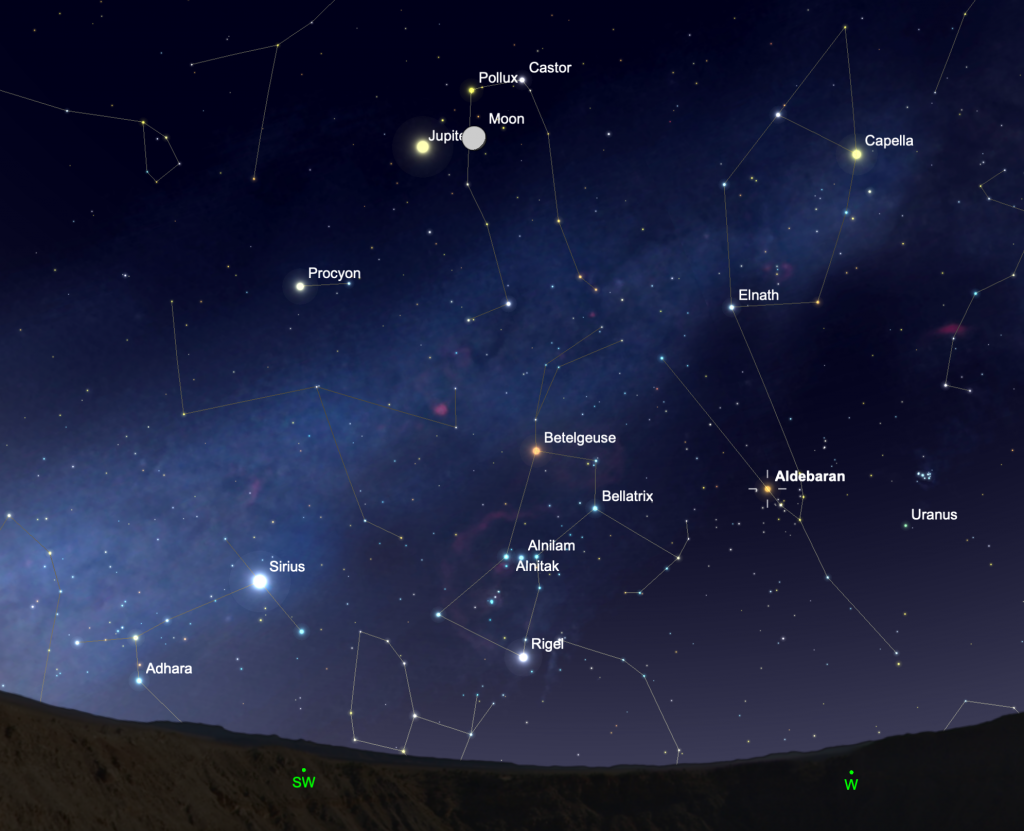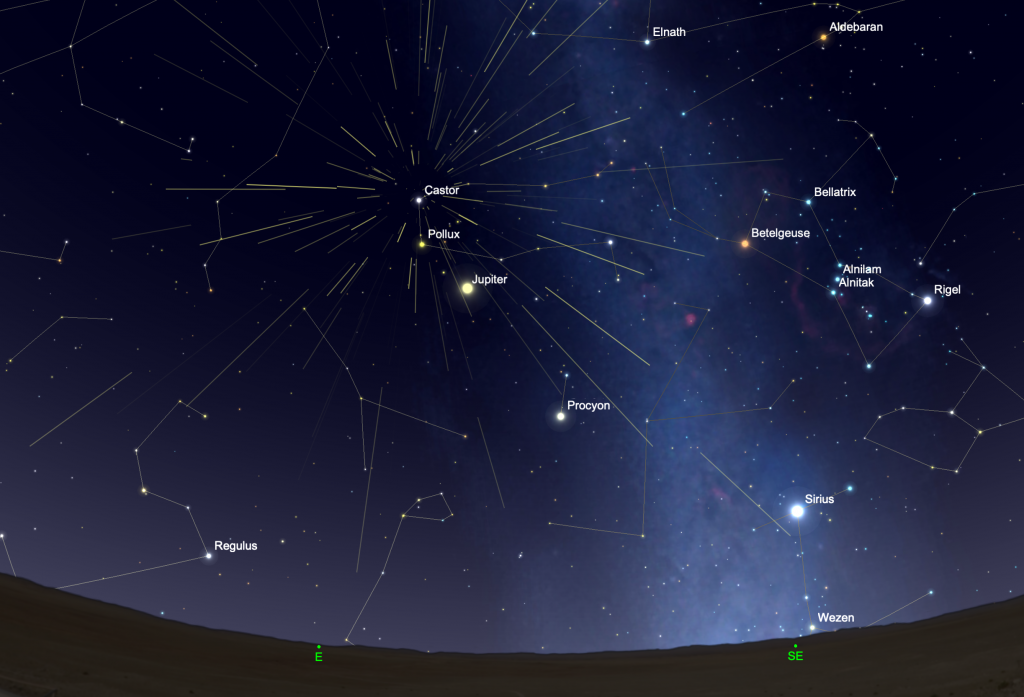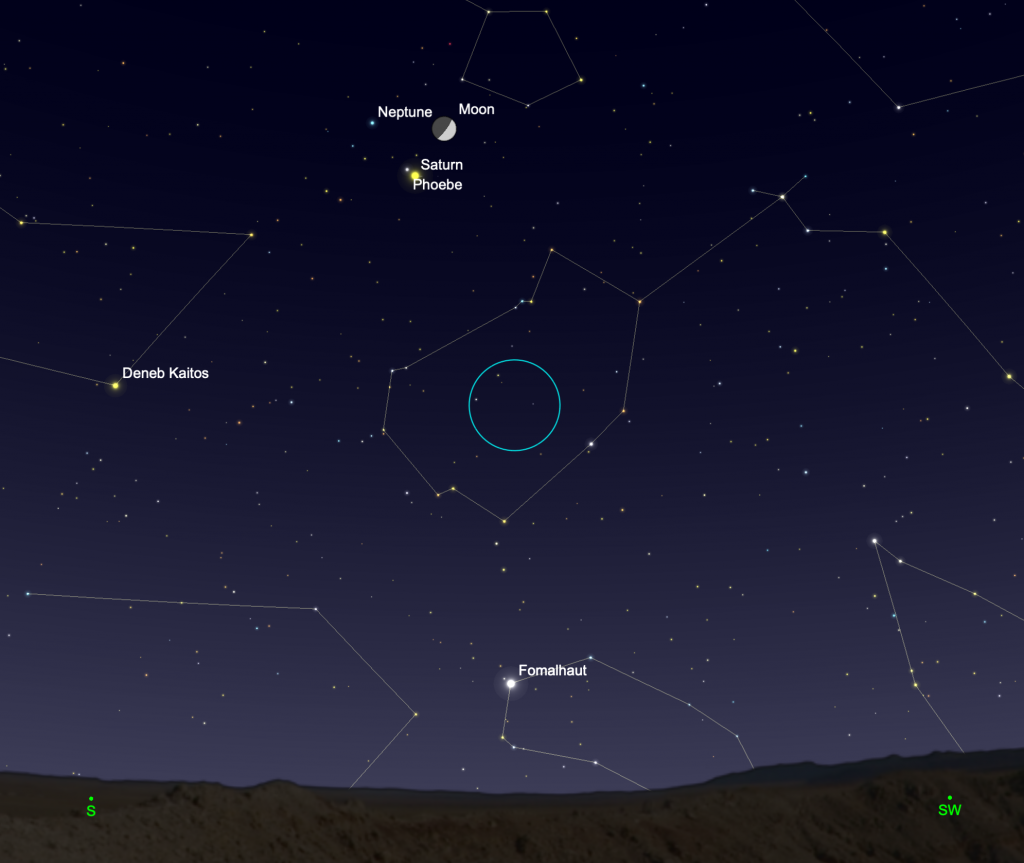The Night Sky This Month – December 2025

(Looking for last month’s ‘Night Sky’? Find it at this link…)
As 2025 comes to an end, we see Jupiter and Saturn in prime viewing locations in the evening sky. While Venus is lost in the sun’s glare, Mercury makes a good morning apparition for northern observers. The Geminid meteor shower arrives in at mid-month with the Moon out of the way this year. The Sun reaches the December solstice on the 21st marking the beginning of winter and summer in the northern and southern hemispheres, respectively. And a large sunspot group is turning into view; activity from this group may trigger strong auroral activity late in the first week and into the second week of December. Here’s what to see in the night sky this month…
3 December 2025. The nearly-full Moon passes through the Pleiades star cluster. This nominally interesting event makes for challenging viewing as the brilliance of the Moon obscures the blue-white stars of the cluster, even with binoculars. But give it a try!
4 Dec. 2025. Full Moon, 23:14 UT (the ‘Cold Moon’). The Moon also lies near perigee today, so this will be a ‘Super Moon’ that appears about 7% larger than average.

7 Dec. Get out of bed early and wander out to see the waning crescent Moon and Jupiter together with the star Pollux forming a triangle high in the southwestern sky. Jupiter lies about 5o southeast of the Moon and shines at magnitude -2.6, still slowly brightening on its way to opposition next month.
7 Dec. Also look for Mercury low over the southeastern horizon before sunrise. The planet reaches its greatest western elongation today about 21o from the sun and shines at a respectable magnitude -0.4. This is the best morning apparition of the year for northern-hemisphere observers.
9 Dec. Look for the Moon rising around 10 p.m. local time very near the bright star Regulus in Leo. The pair make their closest approach near midnight, and for many locations in Canada, Iceland, Greenland, and Europe, the Moon occults the star – an impressive event. Timing for various locations at this link.
11 Dec. Last Quarter Moon, 20:52 UT

13-14 Dec. The usually reliable Geminid meteor shower peaks in the late hours of December 13 and into the early morning of the 14th. The stays out of the way this year allowing us to view even the faintest meteors, so it’s worth the effort to see the Geminids this year. Look for them late in the evening and after midnight. Geminids can appear anywhere in the sky and trace their path back to a point near the star Castor in the constellation Gemini. Also, look especially just after dark on the 13th for a few brighter Geminids that may enter the atmosphere at a shallow angle and burn slowly across the sky. The meteor shower happens on this date each year as the Earth passes through a stream of debris from the asteroid 3200 Phaethon, an Apollo asteroid discovered in 1983.
14 Dec. If you’re out looking for Geminids, pause to see the waning crescent Moon about 2o from the bright star Spica rising in the southeast a couple of hours before sunrise.
20 Dec. New Moon, 01:43 UT
21 Dec. The December solstice arrives at 15:03 UTC. This marks the longest night of the year in the northern hemisphere and the beginning of winter, and the longest day of the year in the southern hemisphere and the beginning of summer.

26 Dec. Saturn sits about 3o south of the waxing crescent Moon this evening high in the southwestern sky south of the Circlet of Pisces. The planet’s rings continue to appear a little over a degree from edge-on which presents a striking view in a telescope. Also turn your scope 4o northeast of Saturn to spot the blue-green disk of 8th magnitude Neptune, the most distant major planet in the solar system.
27 Dec. First Quarter Moon, 19:10 UT
31 Dec. End the year by looking for a gibbous Moon near the Pleiades and Hyades star clusters rising in the eastern sky after sunset.